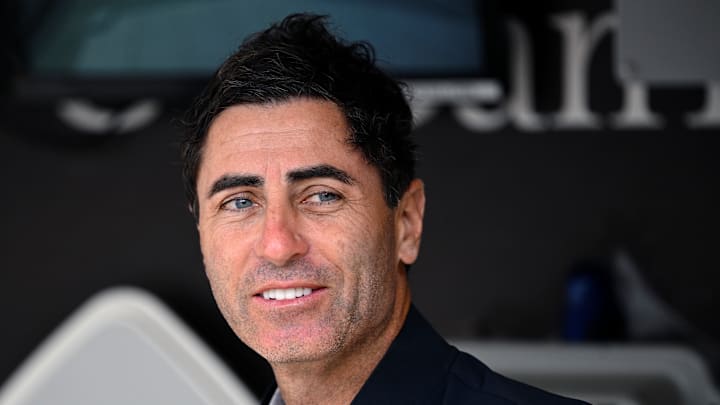San Diego didn’t just trade away a headline. They traded away a conversation. When the Padres sent blue-chip infield prospect Leo De Vries to The Athletics in July 2025, the national takeaway was simple: star power out, win-now pitching in. But inside the organization, the calculation was more layered. If you move a prospect who commands that much oxygen, you’d better have another storyline ready to breathe life into the farm.
Enter Jorge Quintana, the switch-hitting shortstop who checks boxes the Padres value, age, athleticism, makeup, defensive versatility, and who gives fans a reason to believe the system still has a future-face in the pipeline.
Padres’ Jorge Quintana could quiet Leo De Vries chatter
That’s the frame for 2026. The Padres got what they needed in the short term — Mason Miller slamming doors and JP Sears soaking up innings, while betting that their scouting and development machine could uncover (and then accelerate) the next wave.
Quintana is precisely that kind of bet. He’s not De Vries in name recognition, yet the ingredients are there: switch-hitting foundation, growing game power, real speed, and enough polish at 18 to project impact if the approach holds. If he trends the way San Diego thinks he can, the post-De Vries narrative could flip from “what they lost” to “what they saw coming.”
For context, the July deal that shipped De Vries, ranked No. 5 by Baseball America and No. 3 by MLB Pipeline at the time, delivered Miller and Sears to San Diego as headliners, with other pieces involved. It was a massive talent swing, the kind that resets both club timelines and fan expectations. Moving that caliber of prospect is never easy, but the Padres’ front office has long trusted its ability to identify and accelerate talent others might undervalue.
That’s where Quintana comes in. For all the prospects San Diego moved at the Deadline, he was one they were eager to bring in, arriving with Nestor Cortes in the trade that sent Brandon Lockridge to Milwaukee. He had signed for $1.7 million in the Brewers’ 2024 international class, flashed enough bat speed and strike-zone feel to intrigue evaluators in the Arizona Complex League (.752 OPS), and then took an age-appropriate leap to Lake Elsinore after the Padres acquired him. The results were uneven, what you expect from a teenager taking on A-ball, yet the process held up.
The tool set is what keeps coaches leaning forward. Quintana is that rare switch-hitter with fairly even early splits, which matters because it grants lineup flexibility without platoon babysitting. He already shows decent bat-to-ball for his age and projects to add real impact as his frame matures. The power flashes are real, he even left the yard against rehabbing big leaguer Aaron Ashby before the ACL season kicked off, and Padres instructors believe there’s plus raw to surface as the approach tightens.
Zoom out, and the stat line supports the projection without overselling it: at 18 years old, Quintana slashed .243/.339/.363 across 75 games between Rookie ball and Single-A, with 4 home runs, 28 RBIs, and 26 steals. That combination, contact foundations, budding pop, and opportunistic speed, plays in today’s game, especially for a switch-hitting shortstop who can stay in the dirt and grow into damage.
The organizational context matters, too. San Diego has a history of plucking prospects from other orgs and finding extra gears once they’re in-house. They value athletic, multi-position infielders who can pressure pitchers from both sides and evolve into matchup-proof bats. By those criteria, it’s easy to see why Quintana already sits as the club’s No. 7 prospect and why internal voices talk about his 2026 as “must-watch.”
No one is saying he is De Vries. What the Padres are saying — by acquisition cost, by usage, by how quickly they’ve challenged him, is that Quintana has the ingredients to change the conversation.
